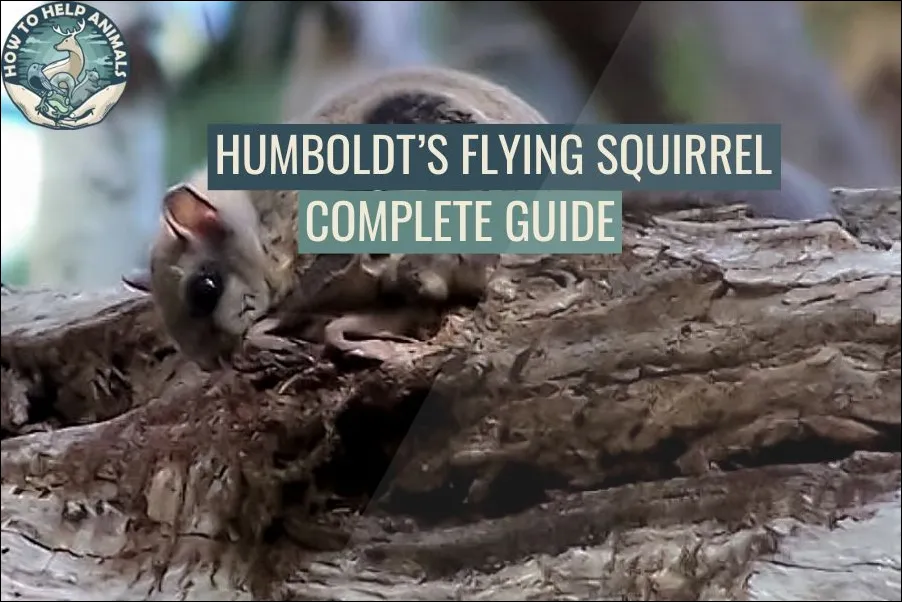
In the misty twilight of California’s ancient redwood groves, a shadow detaches from the massive trunk of a thousand-year-old giant. Silent as a whisper, this mysterious glider navigates between towering trees that have witnessed centuries pass beneath their canopy. The Humboldt’s Flying Squirrel, one of North America’s most recently recognized and least understood flying squirrels, begins its secretive journey through some of the world’s most magnificent forests.
Humboldt’s Flying Squirrel (Glaucomys oregonensis) is a recently discovered species endemic to the Pacific Northwest, distinguished by its larger size compared to Southern Flying Squirrels, darker fur coloration, and specialized adaptation to old-growth coniferous forests of California and Oregon.
| Attribute | Details |
|---|---|
| Scientific Name | Glaucomys oregonensis |
| Size | 9-11 inches body length, 4-6 inches tail |
| Weight | 60-120 grams (2-4 ounces) |
| Lifespan | 4-6 years estimated (limited data) |
| Habitat | Old-growth coniferous forests, coastal temperate rainforests |
| Diet | Specialist: fungi, lichens, conifer seeds, insects |
| Activity | Nocturnal (peak activity 2-4 hours after sunset) |
| Conservation Status | Data Deficient (recently discovered species) |

Physical Description
Humboldt’s Flying Squirrel represents one of the most recently recognized additions to our Complete North American Squirrel Species Guide, having been definitively identified as a distinct species only in 2017 through advanced genetic analysis that revealed its unique evolutionary history. This remarkable discovery fundamentally changed our understanding of flying squirrel diversity in North America, demonstrating that what scientists had long considered a single widespread species actually comprised multiple distinct evolutionary lineages.
The physical characteristics of Humboldt’s Flying Squirrel reflect its specialization for life in the Pacific Northwest’s unique coastal forest ecosystems, with adaptations that distinguish it from both the Northern Flying Squirrel and Southern Flying Squirrel found elsewhere in North America. Their intermediate size places them between these two species, with body proportions and fur characteristics that reflect their distinct evolutionary path and ecological specializations.
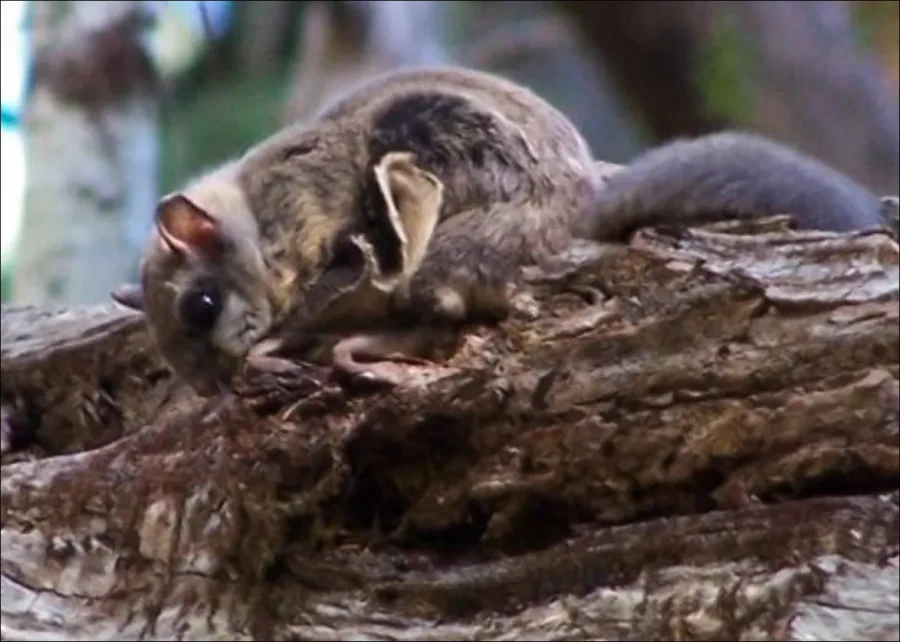
Their fur displays distinctive coloration patterns that help distinguish them from related species, featuring rich brown to grayish-brown dorsal coloration with subtle reddish highlights that become more pronounced in certain lighting conditions. The ventral surface shows cream to pale gray coloration that extends from the chin to the base of the tail, creating a striking contrast with their darker back and sides. This fur remains consistently dense and soft throughout the year, providing essential insulation against the cool, moist conditions characteristic of their Pacific coastal habitat.
The patagium, their signature gliding membrane, shows subtle structural differences from other flying squirrel species, with proportionally larger surface area relative to body size that may enhance their gliding efficiency in the tall, widely-spaced trees of old-growth forests. This membrane stretches from wrist to ankle along each side of their body, supported by a cartilaginous rod extending from each wrist that provides structural support during gliding maneuvers.
Their large, dark eyes dominate their facial features, reflecting their nocturnal lifestyle and the often dim conditions found beneath dense forest canopies. These eyes contain specialized adaptations for low-light vision, enabling them to navigate effectively through the complex three-dimensional environment of old-growth forests where light levels remain consistently low even during daylight hours.
Body proportions reflect their arboreal specialization, with relatively long limbs and a flattened, well-furred tail that serves multiple functions during gliding including steering, braking, and stabilization. Their feet feature sharp, curved claws perfectly adapted for gripping the deeply furrowed bark of large conifers, while their lightweight bone structure reduces overall body weight without sacrificing the strength needed for their aerial lifestyle.
Sexual dimorphism appears minimal, though detailed comparative studies remain limited due to the recent recognition of this species and the challenges of studying these secretive nocturnal creatures in their remote forest habitats. Both sexes possess identical gliding capabilities and physical adaptations that enable their success in Pacific Northwest forests.
Habitat and Distribution
Humboldt’s Flying Squirrel occupies one of the most restricted and specialized habitat ranges of any North American flying squirrel, with populations confined to a narrow coastal strip extending from northern California through western Oregon and potentially into southwestern Washington. This limited distribution reflects their extreme specialization for old-growth coniferous forest ecosystems that have become increasingly rare throughout their historic range due to extensive logging and development pressures.
Their habitat requirements demonstrate remarkable specificity compared to more adaptable species like the Southern Flying Squirrel, with populations showing strong associations with mature and old-growth forests dominated by coast redwood, Douglas fir, and associated coniferous species. These ancient forests provide the complex structural characteristics essential for their survival, including multiple canopy layers, abundant dead wood, and the specialized fungal communities that form a crucial component of their diet.
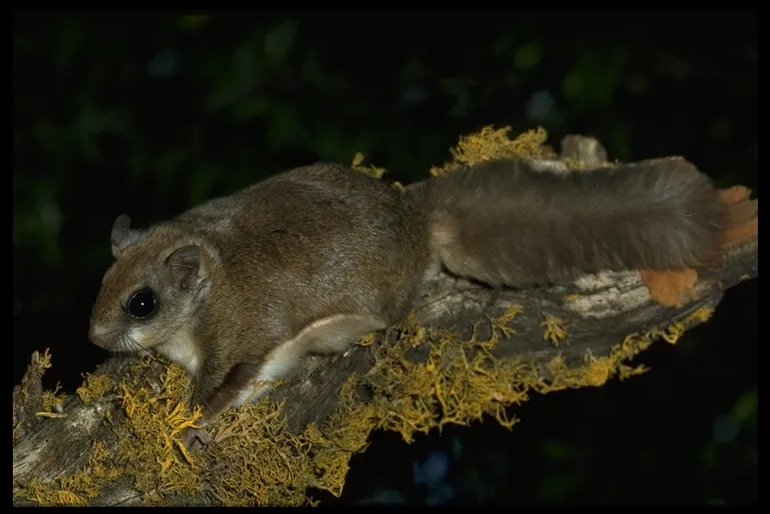
The coastal temperate rainforest ecosystem that supports Humboldt’s Flying Squirrel populations represents one of the world’s most productive and structurally complex forest types, characterized by mild, wet winters and cool, foggy summers that create ideal conditions for both the trees and the diverse communities of organisms they support. These forests maintain consistently high humidity levels and moderate temperatures that support extensive epiphyte communities, including the lichens and mosses that may supplement flying squirrel diets.

Elevation preferences vary throughout their range, from near sea level in coastal areas to approximately 4,000 feet in inland mountains, with populations showing adaptability to different elevational zones as long as suitable forest structure and composition remain available. However, their distribution appears closely tied to areas that receive significant maritime influence, including coastal fog that helps maintain the moist conditions characteristic of their preferred habitat.
Forest age and structural complexity play critical roles in determining habitat suitability, with populations showing strong preferences for forests containing trees over 200 years old and exhibiting the multi-layered canopy structure characteristic of old-growth systems. These mature forests provide the large-diameter trees necessary for den sites, the continuous canopy cover required for gliding, and the complex fungal communities that support their specialized diet.
The geographic isolation of suitable habitat patches has created a naturally fragmented distribution pattern that may contribute to genetic differentiation among populations and influences conservation planning priorities. Many populations exist as small, isolated groups separated by areas of unsuitable habitat, making them vulnerable to local extinctions and limiting opportunities for genetic exchange between populations.
Human activities have dramatically reduced the extent of suitable habitat throughout their range, with old-growth forest loss representing the primary threat to population persistence. Historical logging has eliminated vast areas of ancient forest, while ongoing development pressure and forest management practices continue to modify remaining habitat in ways that may not support viable flying squirrel populations.
Climate change poses additional challenges, as shifting precipitation patterns and temperature regimes may alter the forest conditions that Humboldt’s Flying Squirrels require for survival. Rising temperatures and changing fog patterns could affect the moisture-dependent ecosystems that support both the trees and the fungal communities essential for their persistence.
Diet and Feeding Behavior
Humboldt’s Flying Squirrel exhibits highly specialized feeding behaviors that reflect their adaptation to the unique ecological conditions found in Pacific Northwest old-growth forests, with dietary preferences that distinguish them significantly from other North American flying squirrel species. Their feeding strategy demonstrates remarkable specialization for exploiting the abundant fungal resources found in mature coniferous forest ecosystems, setting them apart from the more generalized diets of species like the Eastern Gray Squirrel or American Red Squirrel.
Hypogeous fungi, commonly known as truffles, form the cornerstone of their dietary strategy, with these underground mushrooms comprising up to 90% of their food intake during certain seasons. This extreme specialization rivals that of the Northern Flying Squirrel in some regions, though the specific fungal species they target reflect the unique mycological communities found in Pacific coastal forests. Their exceptional ability to locate these buried treasures using scent demonstrates sophisticated sensory adaptations that enable them to find fungi buried several inches beneath forest litter and soil.
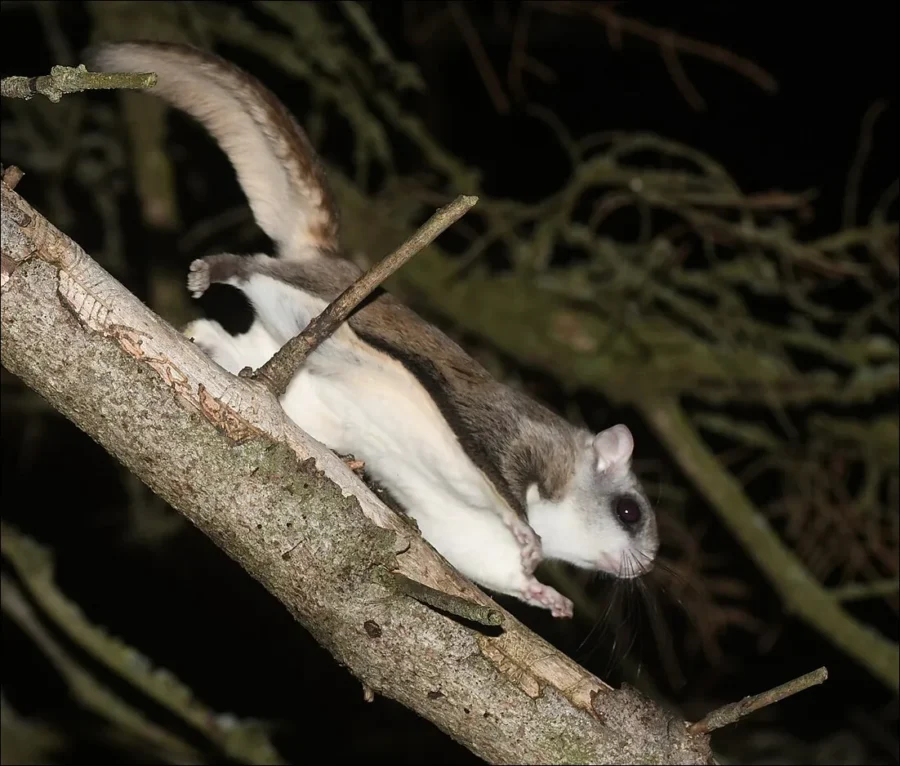
The fungal species they consume show remarkable diversity, including numerous truffle species that form symbiotic relationships with the roots of Douglas fir, redwood, and other dominant tree species in their habitat. These mycorrhizal relationships create complex underground networks that benefit forest health while providing essential nutrition for flying squirrels. Their consumption and subsequent dispersal of fungal spores through their droppings makes them crucial partners in maintaining the ecological integrity of old-growth forest ecosystems.
Seasonal variation in food availability influences their dietary patterns, though their heavy reliance on fungi means they face fewer seasonal constraints than species dependent on mast crops or seasonal fruits. During spring and early summer, they supplement their fungal diet with emerging vegetation, tree buds, and flowers, while late summer and fall bring opportunities to consume conifer seeds from Douglas fir, hemlock, and other species.
Epiphytic lichens and mosses growing on tree bark and branches provide additional dietary components, particularly during periods when fungi may be less abundant. Their ability to harvest these epiphytes demonstrates their exceptional climbing skills and their adaptation to exploiting the three-dimensional resources available in complex forest canopies.
Insect consumption plays a secondary but important role in their nutrition, particularly during breeding season when protein requirements increase. They actively hunt moths, beetles, and other nocturnal insects, using their exceptional night vision and agility to capture prey both in flight and on bark surfaces. Their insectivorous activities contribute to forest pest control, though this represents a smaller proportion of their ecological impact compared to their role in fungal spore dispersal.
Tree sap and inner bark occasionally supplement their diet, particularly during late winter and early spring when other food sources may be scarce. Their small size allows them to access sap sources on branches too delicate for larger animals, while their climbing abilities enable them to reach productive sap flows high in the forest canopy.
Food caching behavior appears less developed than in some other squirrel species, possibly reflecting the year-round availability of fungal resources in their moist forest habitat. However, they may store limited quantities of conifer seeds and other non-perishable foods in tree cavities and other secure locations for use during adverse weather conditions.
Their foraging schedule follows strict nocturnal patterns, with peak activity occurring during the darkest hours when their exceptional night vision provides maximum advantage and when many of their preferred fungi release spores or become more detectable through scent. This timing also minimizes encounters with diurnal predators and competitors while allowing them to exploit resources that may be less accessible during daylight hours.
Reproduction and Life Cycle
The reproductive biology of Humboldt’s Flying Squirrel remains one of the least understood aspects of their natural history, reflecting both their recent recognition as a distinct species and the inherent challenges of studying secretive nocturnal mammals in remote old-growth forest environments. Current knowledge derives from limited field observations and extrapolations from related species, highlighting the urgent need for comprehensive research to understand their reproductive strategies and population dynamics.
Breeding season appears to follow patterns similar to other northern flying squirrel species, with mating likely occurring once annually during late winter or early spring when environmental conditions begin to favor offspring survival. The timing of reproductive activities in Pacific Northwest forests may be influenced by the region’s distinct seasonal patterns, including the extended wet season that characterizes their coastal habitat and the summer dry period that affects resource availability.
Courtship behaviors probably involve aerial displays that showcase their remarkable gliding abilities, with males expanding their territories and engaging in extended flights as they search for receptive females. The complex three-dimensional structure of old-growth forests provides numerous opportunities for elaborate courtship chases, with pairs potentially spiraling around massive tree trunks and navigating between the multiple canopy layers that characterize their habitat.

Nest site selection likely emphasizes the large tree cavities available in old-growth forests, with females choosing locations in mature trees that provide protection from predators and weather while offering easy access to foraging areas. The abundance of large-diameter trees with natural hollows in old-growth forests may provide superior nesting opportunities compared to younger forests, potentially contributing to higher reproductive success rates in intact habitat.
Gestation presumably lasts approximately 37-42 days, similar to other flying squirrel species, with females giving birth to litters of 2-4 young during late spring or early summer when environmental conditions are most favorable for raising offspring. The timing of births likely coincides with peak fungal availability and optimal weather conditions that support successful offspring development and survival.
Newborn Humboldt’s Flying Squirrels are born in an altricial state, completely dependent on maternal care for survival during their initial weeks of life. Their eyes remain closed for approximately 4-5 weeks, and the characteristic gliding membrane develops gradually as they approach independence. The extended period of parental dependency may be particularly important in old-growth forest environments where young individuals must master complex three-dimensional navigation skills.
Maternal care likely extends beyond basic nursing to include extensive education in essential survival skills, including gliding techniques, food location and identification, predator recognition, and territorial navigation. The complexity of old-growth forest environments may require extended learning periods that exceed those needed by flying squirrels in simpler habitat types.
Weaning probably occurs at 8-10 weeks of age, though young individuals may remain with their mother for several additional weeks as they develop the skills necessary for independent survival. Family groups may share den sites and foraging areas during this transition period, providing continued protection and learning opportunities for developing juveniles.
Sexual maturity is likely reached during their first or second year, depending on environmental conditions and individual development rates. The specialized habitat requirements and complex foraging strategies of this species may favor delayed reproduction to ensure that individuals have sufficient time to develop the knowledge and skills necessary for successful breeding and offspring care.
Population dynamics remain poorly understood, with limited data available on survival rates, reproductive success, and population growth patterns. This knowledge gap represents a critical priority for conservation planning, as effective management strategies require detailed understanding of demographic parameters and population trends.
Behavior and Social Structure
Humboldt’s Flying Squirrel exhibits behavioral patterns that reflect their specialization for life in the structurally complex and resource-rich environment of Pacific Northwest old-growth forests, though detailed behavioral studies remain limited due to their recent species recognition and the challenges inherent in studying nocturnal arboreal mammals in dense forest environments. Their social organization and behavioral strategies likely represent adaptations to the unique ecological conditions found in their specialized habitat.
Social structure appears to follow patterns similar to other flying squirrel species, with flexible territorial systems that vary based on resource availability, population density, and seasonal conditions. The abundance of suitable den sites and food resources in old-growth forests may support higher population densities and more complex social interactions than are possible in younger or more simplified forest environments.
Gliding behavior represents their most distinctive behavioral adaptation, with individuals capable of covering substantial distances between the widely-spaced giant trees that characterize old-growth forests. Their gliding abilities may exceed those of other flying squirrel species, reflecting adaptations to the unique spatial challenges posed by navigating between trees that may be separated by distances of 100 feet or more. The ability to make precise landings on specific branches high in the forest canopy demonstrates remarkable spatial awareness and motor control.
The three-dimensional complexity of old-growth forests provides numerous opportunities for territorial organization and resource partitioning, with different individuals potentially specializing in different vertical zones or horizontal areas within the forest. The multiple canopy layers characteristic of old-growth stands create diverse microhabitats that may support varied behavioral strategies and social arrangements.
Communication systems likely involve complex vocalizations, scent marking, and tactile behaviors that facilitate coordination in the dense forest environment where visual contact may be limited. Their vocal repertoire probably includes specialized calls adapted to carry effectively through the sound-dampening environment of dense forest canopies, while scent marking may be particularly important for territorial maintenance and mate location in their structurally complex habitat.
Activity patterns follow strictly nocturnal schedules, with emergence typically occurring well after sunset when forest light levels drop to minimal levels. Their peak activity periods may be timed to coincide with optimal conditions for fungal detection and harvesting, as many fungi release spores or become more aromatic during specific nighttime hours.
Seasonal behavioral changes likely reflect the varying resource availability and environmental conditions characteristic of Pacific Northwest forests, including responses to the extended wet season, summer drought periods, and the timing of fungal fruiting cycles. Their behavioral flexibility may be crucial for survival in an environment characterized by significant seasonal variation in weather patterns and resource availability.
Nesting behaviors probably emphasize the utilization of large tree cavities available in old-growth forests, with individuals potentially maintaining multiple den sites that serve different functions throughout their annual cycle. The abundance of suitable nesting locations in mature forests may reduce competition for prime sites while providing opportunities for complex social arrangements and resource sharing.
Predator avoidance strategies must account for the diverse assemblage of potential threats found in Pacific Northwest forests, including aerial predators such as spotted owls and great horned owls, as well as terrestrial predators like martens and weasels that are capable of pursuing them into the forest canopy. Their nocturnal activity patterns and exceptional gliding abilities provide primary defenses against predation pressure.
Interaction with Humans
The relationship between Humboldt’s Flying Squirrel and humans is fundamentally shaped by their extreme habitat specialization and the history of old-growth forest management in the Pacific Northwest, creating a conservation story that intertwines with some of the most contentious environmental debates of the past century. Unlike more adaptable species such as the Eastern Gray Squirrel or Fox Squirrel that can thrive in human-modified landscapes, Humboldt’s Flying Squirrel populations depend entirely on forest ecosystems that have been drastically reduced by human activities.
Historical logging practices throughout the Pacific Northwest have eliminated the vast majority of old-growth forests that once supported Humboldt’s Flying Squirrel populations, with estimates suggesting that less than 5% of original old-growth forest remains in many areas of their range. This massive habitat loss represents one of the most significant conservation challenges facing any North American mammal species, creating a situation where viable populations persist only in scattered protected areas and remnant forest patches.
The timber industry’s historical focus on harvesting the largest and oldest trees has specifically targeted the forest characteristics most essential for Humboldt’s Flying Squirrel survival, creating a direct conflict between traditional forest management practices and conservation needs. Modern sustainable forestry approaches attempt to balance economic interests with ecological conservation, though the extended time scales required for old-growth forest development present ongoing challenges for species recovery efforts.
Research activities have intensified since the species’ formal recognition in 2017, with scientists working to understand their habitat requirements, population dynamics, and conservation needs through radio telemetry studies, genetic analysis, and habitat modeling. These research efforts face significant logistical challenges due to the remote locations of many populations and the difficulties inherent in studying small, nocturnal, arboreal mammals.
Public awareness of Humboldt’s Flying Squirrel remains limited despite their unique conservation status, reflecting both their recent scientific recognition and their secretive habits that make direct observation extremely difficult. Educational efforts by conservation organizations, zoos, and research institutions work to build public understanding and support for old-growth forest conservation as essential habitat for this and numerous other specialized species.
The species has become a symbol for old-growth forest conservation efforts, highlighting the importance of preserving intact ecosystems rather than focusing solely on individual charismatic species. Their extreme habitat specialization demonstrates how forest management decisions can have cascading effects on entire communities of organisms that depend on old-growth forest characteristics.
Climate change adds additional complexity to human-flying squirrel interactions, as shifting temperature and precipitation patterns may alter the forest conditions that support both the trees and the fungal communities essential for their survival. Coastal fog patterns, which help maintain the cool, moist conditions characteristic of their habitat, may be particularly vulnerable to climate change effects.
Occasionally, individuals may be encountered in areas adjacent to suitable habitat, including parks, nature preserves, and forested residential areas that maintain connections to old-growth forest remnants. These encounters provide valuable opportunities for public education and research, though they also highlight the fragmented nature of remaining habitat and the challenges facing population persistence.
Conservation partnerships between government agencies, private landowners, timber companies, and conservation organizations represent the most promising approaches for addressing the complex challenges facing Humboldt’s Flying Squirrel populations. These collaborative efforts recognize that effective conservation requires landscape-scale planning that addresses both ecological needs and human economic interests.
Conservation Status and Threats
Humboldt’s Flying Squirrel faces one of the most precarious conservation situations of any North American mammal species, with their recently recognized taxonomic status complicating efforts to assess population trends and implement effective conservation strategies. Their classification as “Data Deficient” reflects the limited scientific information available about their population size, distribution, and ecological requirements, highlighting the urgent need for comprehensive research and monitoring programs.
The primary threat facing Humboldt’s Flying Squirrel populations stems from the catastrophic loss of old-growth forest habitat throughout their range, with historical logging having eliminated an estimated 95% or more of the ancient forests they require for survival. This massive habitat destruction represents one of the most severe conservation challenges facing any North American species, creating a situation where remaining populations exist as isolated fragments in a landscape dominated by unsuitable habitat.
Current populations are confined to scattered protected areas, including national parks, state parks, and designated wilderness areas, along with small remnant forest patches on private lands. This fragmented distribution pattern increases vulnerability to local extinctions while limiting opportunities for genetic exchange between populations, potentially leading to reduced genetic diversity and increased susceptibility to environmental stochasticity.
Ongoing habitat modification continues to threaten remaining populations through edge effects, invasive species establishment, and gradual degradation of forest structure and composition. Even protected areas may experience subtle changes in forest conditions due to air pollution, altered fire regimes, and other indirect human impacts that can affect the specialized fungal communities essential for their survival.
Climate change poses emerging threats that may reshape suitable habitat distribution and availability, with rising temperatures and altered precipitation patterns potentially affecting both the trees and the complex fungal communities that support Humboldt’s Flying Squirrel populations. Coastal fog patterns, which help maintain the cool, moist conditions characteristic of their preferred habitat, appear particularly vulnerable to climate change effects.
The small population sizes and isolated distribution of remaining populations increase vulnerability to demographic and environmental stochasticity, disease outbreaks, and genetic bottlenecks that can drive local populations to extinction. Limited dispersal abilities between fragmented habitat patches compound these risks by preventing recolonization of areas where local extinctions have occurred.
Competition with other species, including the more widespread Northern Flying Squirrel, may present additional challenges in areas where habitat modifications favor more generalist species over habitat specialists. Understanding these competitive interactions remains a priority for conservation planning and management.
Disease and parasite pressures represent poorly understood threats that could significantly impact small, isolated populations. The lack of baseline health data and limited understanding of disease susceptibility creates uncertainty about the potential impacts of emerging pathogens or parasite outbreaks on population viability.
Research needs remain extensive, with fundamental questions about population size, distribution, reproductive biology, and habitat requirements still requiring investigation. The recent species recognition means that many aspects of their ecology and conservation needs remain unknown, hampering efforts to develop effective management strategies.
Conservation efforts focus primarily on habitat protection and restoration within their limited range, with emphasis on preserving remaining old-growth forest fragments and promoting forest management practices that maintain or restore old-growth characteristics in suitable areas. Protected area expansion and improved connectivity between habitat fragments represent key conservation priorities.
Legal protection under endangered species legislation may be warranted given their restricted distribution and severe habitat limitations, though the data deficiency classification currently limits regulatory protections available for the species and its habitat.
How to Help Humboldt’s Flying Squirrel
Supporting Humboldt’s Flying Squirrel conservation requires focused efforts that address their unique habitat needs and the specific threats they face as one of North America’s most habitat-specialized mammals. Given their recent species recognition and extremely limited distribution, conservation actions for this species differ significantly from those appropriate for more widespread species, emphasizing habitat protection and ecosystem-scale conservation approaches.
Habitat Protection and Restoration
The most critical conservation need involves protecting remaining old-growth forest patches within their range and promoting forest management practices that maintain or restore old-growth characteristics. Support organizations working to acquire and protect ancient forest remnants, as every acre of preserved habitat represents irreplaceable resources for this specialized species.
Advocate for expanded protected area designation within their range, including the establishment of new parks, wilderness areas, and ecological reserves that encompass significant old-growth forest stands. Contact elected representatives about the importance of preserving remaining ancient forests and supporting legislation that protects old-growth ecosystems.
If you own forested property within their range, consider implementing management practices that promote old-growth characteristics including retaining large trees, maintaining snags and downed wood, and avoiding practices that simplify forest structure. Even small improvements in habitat quality can benefit not only flying squirrels but numerous other old-growth dependent species.
Supporting Research and Monitoring
Contribute to citizen science programs and research efforts focused on documenting Humboldt’s Flying Squirrel distribution and habitat requirements. Many research institutions and wildlife agencies need volunteers to help with field surveys, data collection, and monitoring activities that are essential for understanding their conservation needs.
Report any potential sightings to wildlife agencies and research institutions, as every observation contributes valuable information about their current distribution and habitat use patterns. Even uncertain sightings can help guide future research efforts and survey priorities.
Support funding for research programs through donations to universities, conservation organizations, and wildlife agencies conducting flying squirrel research. The data deficiency surrounding this species means that research investments can have immediate impacts on conservation planning and management decisions.
Conservation Organization Support
Donate to and volunteer with organizations working specifically on old-growth forest conservation and Pacific Northwest ecosystem protection. Groups like Save the Redwoods League, Ancient Forest Alliance, and similar organizations work directly on habitat protection efforts that benefit Humboldt’s Flying Squirrel populations.
Support land trusts and conservation organizations that acquire and protect forest habitats within their range, as private land conservation represents one of the most effective strategies for preserving remaining habitat fragments and creating corridors between protected areas.
Educational Outreach and Awareness
Share information about Humboldt’s Flying Squirrel with others, helping to build awareness about this recently discovered species and the unique conservation challenges they face. Many people remain unaware that this distinct species exists, making education efforts particularly important for building conservation support.
Participate in or organize educational programs about old-growth forest ecosystems and their dependent species, helping others understand the connections between forest conservation and wildlife protection. Nature centers, schools, and community organizations provide excellent venues for raising awareness about specialized species like Humboldt’s Flying Squirrel.
Sustainable Consumer Choices
Make informed choices about wood and paper products, supporting companies that use sustainable forestry practices and avoid harvesting old-growth forests. Look for Forest Stewardship Council (FSC) certification and other sustainability labels that indicate responsible forest management practices.
Support businesses and organizations that contribute to forest conservation efforts through their operations, purchasing decisions, and corporate social responsibility programs.
Policy Advocacy
Advocate for stronger legal protections for old-growth forests and the species they support, including support for endangered species listing if warranted by future research findings. Contact policymakers about the importance of preserving ancient forest ecosystems for current and future generations.
Support policies that address climate change, as shifting environmental conditions pose additional threats to the already limited habitat available for this specialized species.
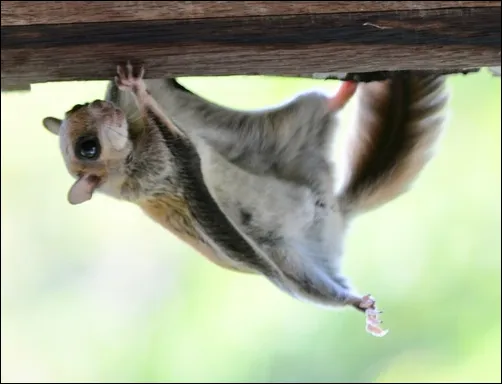
Conclusion
Humboldt’s Flying Squirrel stands as one of the most remarkable and precarious success stories in modern mammalian taxonomy, representing both the excitement of scientific discovery and the urgency of conservation action in our rapidly changing world. Their formal recognition in 2017 fundamentally altered our understanding of flying squirrel diversity in North America while highlighting the critical importance of preserving the ancient forest ecosystems that support such specialized and vulnerable species.
The story of Humboldt’s Flying Squirrel embodies the hidden complexity of forest ecosystems and the profound connections that link species survival to habitat integrity. Their extreme specialization for old-growth forest conditions demonstrates how millions of years of evolutionary adaptation can create species so finely tuned to specific environmental conditions that they cannot survive the rapid changes imposed by human activities. Understanding these connections, as outlined in our Complete North American Squirrel Species Guide, helps us appreciate the irreplaceable value of intact ecosystems and the devastating consequences of habitat loss.
Their conservation status serves as a powerful reminder that scientific discovery and conservation action must proceed hand in hand, as species cannot be protected until they are properly recognized and understood. The decades or perhaps centuries during which Humboldt’s Flying Squirrel populations declined unrecognized highlight the importance of taxonomic research and the potential for additional undiscovered species facing similar conservation challenges.
The future of Humboldt’s Flying Squirrel depends entirely on our collective commitment to preserving the remaining fragments of Pacific Northwest old-growth forest and promoting forest management practices that can restore old-growth characteristics across appropriate landscapes. Their survival represents a test of our ability to prioritize long-term ecosystem health over short-term economic interests, recognizing that the loss of such specialized species diminishes the biological heritage of our planet.
Every action taken to protect Humboldt’s Flying Squirrel also benefits the countless other species that share their ancient forest habitat, from the massive trees that define these ecosystems to the intricate fungal networks that connect forest communities below ground. In protecting these aerial specialists, we preserve not just a recently discovered species, but entire ecosystems that have developed over thousands of years and cannot be replaced within human timescales.
The challenge of conserving Humboldt’s Flying Squirrel ultimately reflects our broader relationship with the natural world and our responsibility to preserve biological diversity for future generations. Their story reminds us that some of nature’s most extraordinary adaptations may be disappearing before we even recognize their existence, making every conservation success a victory not just for individual species, but for the principle that all life forms deserve the opportunity to continue their evolutionary journey in the ecosystems that shaped their existence.
